Wednesday October 5th, 2:10 PM
Good Afternoon Parents and Friends,
Wednesday October 5th, 2:10 PM
Good Afternoon Parents and Friends,
On Wednesday, August 31, 2016, the CEI Shark Research and Conservation Team caught and sampled a huge 258 cm male lemon shark (Negaprion brevirostris). This thrilling capture was made while conducting a longline survey off of Cape Eleuthera, Bahamas to establish a dataset about the abundance and size of different coastal shark species in south Eleuthera. Although a wide variety of sharks can be found around the Bahamas, and there are many known lemon shark nurseries, mature lemon sharks are not commonly seen near south Eleuthera. The information collected from this rare catch can be used to trace the lineage of lemon shark populations found throughout the Bahamas, which can ultimately help influence future shark conservation and management initiatives.
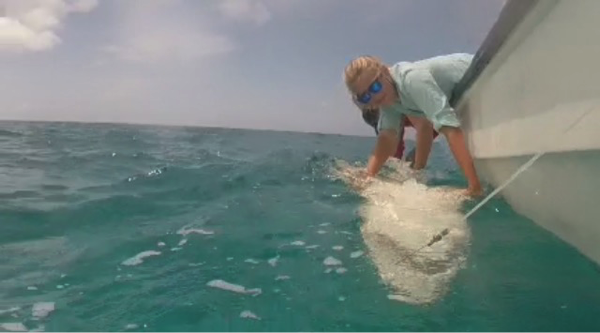
Lemon sharks are a large species of coastal shark that can reach up to 3.5 m in length. They can be identified by their pale brown or olive coloring, and their two equally sized dorsal fins. Lemon sharks are listed as Near Threatened and their position at the top of the food chain makes them a valuable species for the local ecosystems. However, there is a limited amount of data on these adult sharks in this area which makes this catch all the more exciting. The Bimini Biological Field Station fills this knowledge gap by reconstructing adult male genetic information using the samples from the more abundant juveniles. Now we can include the data collected from this individual to create a more complete understanding of the local lemon shark population.

During the workup procedure, the lemon shark was measured to obtain information about its size, age, and sex, which can then be added to the data collected by CEI to show the dynamics of the local populations of sharks. The size of the shark was recorded by taking three specific measurements of its body. The team also collected a tissue sample, which will be used to build up a long term genetic record of the shark populations around Eleuthera. After all measurements and samples were collected, the lemon shark was tagged using a dart tag and a dorsal tag. These tags are used for identification purposes, allowing the research team to recognize a recapture. Following the workup procedure, the lemon shark was released in great condition and everybody was left in awe as it swam away.
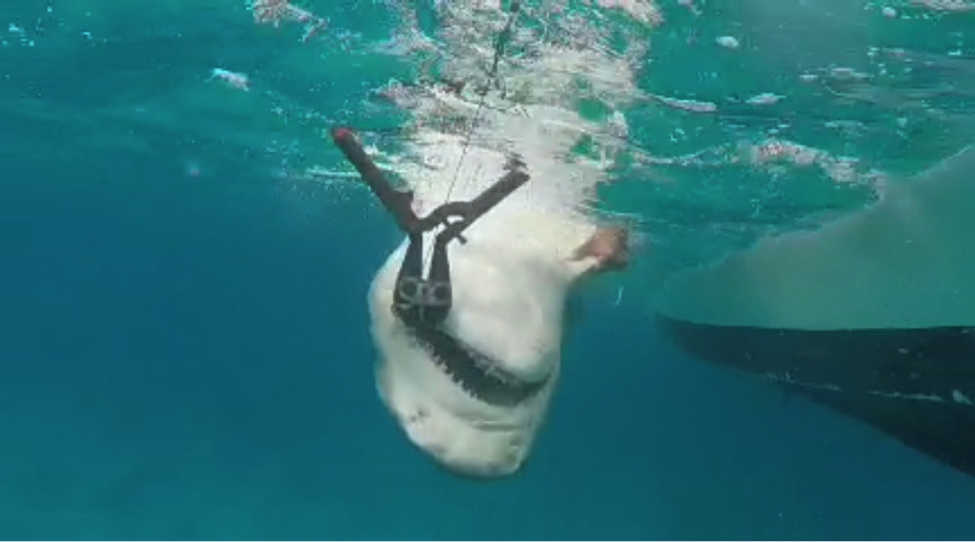
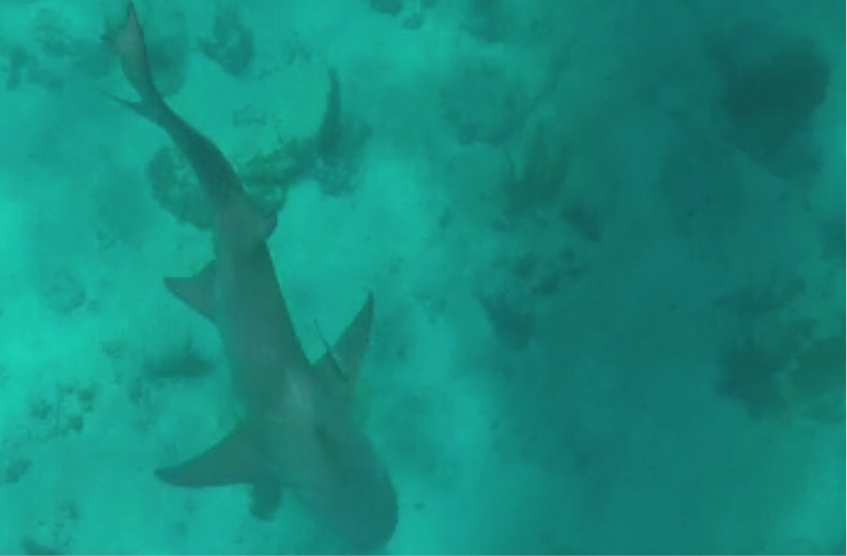
SECORE (SExual COral REproduction) International arrived at the Cape Eleuthera Institute last month for a week of research focused on coral spawning. SECORE is a non-profit organization dedicated to the restoration of coral reefs using wild coral spawn, lab-based fertilization and breeding techniques and outplanting methods. Led by Dr. Dirk Peterson (founder and CEO), Christoph Haacke (BioDivers, Germany), Mark Schick (Shedd Aquarium, USA), and Mitch Carl (Henry Doorly Zoo and Aquarium, USA), the SECORE team believes that in order to rehabilitate degraded reefs, increasing coral survival, diversity and abundance through lab-based breeding techniques is essential. Dr. Peterson began his innovative coral breeding techniques in 2002 by fertilizing coral spawn and raising larvae in a lab. The coral restoration community took notice of his successes, and SECORE has since led projects in locations such as Guam, Mexico, Curaçao, and The Philippines. With reversing the decline of coral reefs a national priority in The Bahamas, SECORE aims to bring its expertise here to Eleuthera, in partnership with CEI, to help with rehabilitation and restoration efforts.

The focus of SECORE’s work in Eleuthera is Elkhorn coral (Acropora palmata), a critically endangered species. Elkhorn coral spawning has rarely been documented in The Bahamas, but is known to occur elsewhere in the Caribbean after sunset, during the days following August full moons. As the week-long workshop began, SECORE aimed its efforts on diving after sunset in high-density areas of Elkhorn coral in hopes of not only documenting the exact timing of the annual spawning event, but also collecting egg and sperm for fertilization back in the lab. To the group’s delight, the timing was perfect. SECORE and CEI documented Elkhorn coral spawning in Eleuthera for the first time! In addition, SECORE collected approximately one to two hundred thousand eggs from four different coral colonies that spawned simultaneously.

To ensure ample genetic diversity among corals fertilized in the lab, SECORE collects eggs and sperm from multiple Elkhorn coral colonies. This diversity is essential for the survival of this endangered species, which can be threatened by a genetic bottleneck as populations decline. Once SECORE induced fertilization, larvae were placed in a breeding chamber for development. Live rock similar to that upon which wild coral larvae attach on natural reefs was introduced to the tanks, allowing lab-reared corals to become established as would their wild counterparts. CEI’s and SECORE’s collaborative goal is to give juvenile corals a head-start by providing a predator-free, controlled environment where survival is enhanced during critical early growth stages. Once juveniles have survived in the lab beyond those critical early stages, they will be strategically out-planted onto local reefs in an effort to rehabilitate areas where Elkhorn corals are in decline.

Many thanks to SECORE International for educating scientists, students and conservationists on site during the visit, and for its continued work to rehabilitate populations of essential, reef-building corals not only in Eleuthera, but throughout the Caribbean.
On August 20th, Dr. Craig Dahlgren from The Perry Institute for Marine Science Laboratory arrived at CEI along with more than 20 scientists and conservationists from around the Bahamas and United States to learn how to conduct reef surveys. The protocols focused on those developed for Atlantic and Gulf Rapid Reef Assessment (AGRRA). Formed in 1998, AGRRA assesses key attributes of coral reefs in the Caribbean using a standardized protocol leading to valuable regional surveys of coral reef health in an online database. AGRRA surveys incorporate coral, benthic and fish species. For this workshop participants were trained in either coral or benthic surveying, in order for each surveyor to be properly specialized, resulting in the highest quality data.

Data collected during AGRRA surveys is used to create Coral Reef Report Cards. Eleutheran reefs have never been surveyed using AGRRA protocols and therefore there has been a knowledge gap for this area. Some of the workshop participants were already AGRRA certified and conducted official surveys around South Eleuthera right away, while others began the training needed to conduct the surveys, led by Dr. Dahlgren.

The week-long training included diving and practicing survey methods out on the reefs as well as classroom time learning and identifying species of coral and algae. Members of CEI were also included in the training in order for AGRRA surveys to be carried out all around Eleuthera in the future to fill knowledge gaps and help advise marine resource management decision-making.
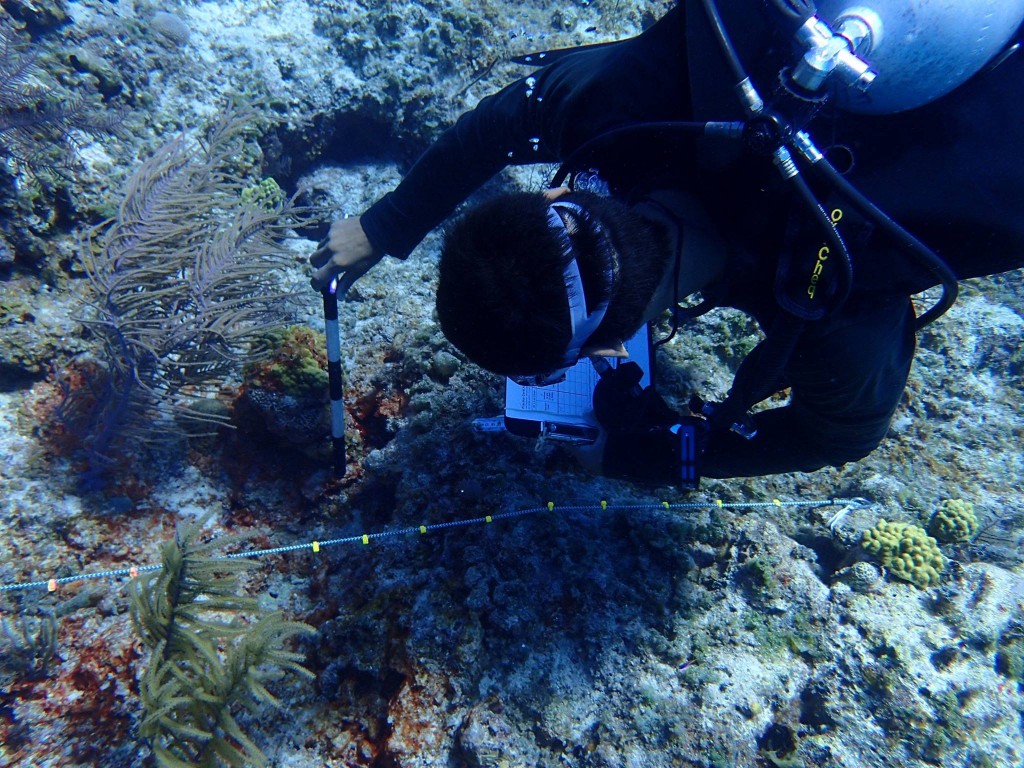
Participants involved in the surveying and training included members from The Bahamas National Trust, Bahamas Reef Environment Educational Foundation (BREEF), The Nature Conservancy, The Bahamas Environment, Science and Technology Commission, Disney Conservation Fund, , Stuart Cove’s Dive Bahamas, Perry Institute for Marine Science, Atlantis, Ocean Crest Alliance, , Greenforce, Forfar Field Station, and Young Marine Explorers. After a busy week everyone was an official AGRRA surveyor and many surveys had already been conducted on the nearby reefs!

Stay tuned to hear more about the workshop conducted by SECORE International involving these participants that combined with their AGRRA training during the week.
Last week, four members of staff from Cape Eleuthera Institute (CEI) visited Harbour Island as part of an outreach event working with the summer camp Space 2 Create.
Space 2 Create is a comprehensive summer enrichment program that hosts 83 students for 3 weeks. Through artistic, academic and community projects, youth are empowered as leaders. During morning session students focus on one of the following tracks;
The CEI team spent two days teaching and interacting with the camp participants exploring different aspects of research and science.
The first day Anna, Research Technician at CEI, gave a presentation about sea turtles in The Bahamas. The group learned about the four species of sea turtle in The Bahamas, and the threats they face. They also learned about their conservation status and the research being conducted currently at CEI. Following the presentation, the excited young students were able to go out in the field and participate in the capture of a green sea turtle contributing to the data they learned about earlier in the morning. They watched enthusiastically as measurements were taken and data was collected, and at the end of the workup were able to name and help safely release the animal. Green sea turtles are the most abundant of all 4 species found on Eleuthera, and are the main focus on the research conducted at CEI. Therefore the measurements taken from the turtle will allow researchers to gain important information such as growth rates and a health estimation of the individual, and contribute to a better understanding of the population of juveniles green sea turtles around Eleuthera.
The team was invited to stay for the remainder of the day to learn more about Space 2 Create and join in some of their afternoon activities. The afternoon was spent singing, dancing, painting, and joining in the drama class.
The following morning, the focus switched to the status of sharks in The Bahamas. Shane Gross, photojournalist specializing in underwater conservation photography, gave an insightful talk on sharks using many of his own photos and experiences. After this, Maggie Winchester, Research Technician at CEI, gave a presentation on the shark research currently going on at the institute, followed by a Cuban dogfish dissection.
Sharks play a significant role in the marine ecosystems of The Bahamas, not only improving ecosystem health but aiding the tourism industry as well. Despite their importance, many species of shark remain vastly understudied. The Cuban dogfish is an abundant yet poorly understood species of deep water shark in The Bahamas, commonly found at around 600m depth. During the dissection, the campers learned about the internal and external adaptations that make this small species of shark able to survive and thrive deep in the water column. This provided a hands on opportunity to learn about shark biology, using a species commonly found around the Cape.
Between Shane and Maggie’s talks and the interaction with the Cuban dogfish, myths about sharks in the Bahamas were addressed and resolved, and many fears were removed.
In the future CEI will work in collaboration with Space 2 Create and Bahamas Plastic Movement to support research activities for Eleutheran Eco Schools Club ‘s.
Photo credit: Shane Gross

The sea turtle research program welcomed four interns to the team this summer. Arriving June 20th, the interns worked hard both in the field and in the lab for 8 weeks learning the research protocols and getting to know the three Earthwatch teen groups that helped gather data over the summer. All four interns had an amazing time gaining hands on experience tagging and handling sea turtles and working with seagrass surveys and habitat mapping.

Camila Mirow (far left) is 19 years old. Despite growing up in Miami, she chose to move up north to study marine biology. She is now an undergraduate student in biological sciences at Mount Holyoke College where she is also completing a certificate in coastal and marine sciences. When Camila has free time she can be found surfing, SCUBA diving or exploring the island. Camila’s trip to the Island School as an EP in 2015 changed her life and she knew that she had to come back, and here she is! She was so excited to be a part of the IS and CEI community and so grateful for this opportunity.

Madeline Doten (middle left) is 18 years old from Orlando, FL. She is going to be a sophomore at Furman University in Greenville, SC studying Biology on the pre-medicine track. Madeline was an Island School Summer Term student in 2014 and is so excited to be back on Eleuthera! In her free time she enjoys scuba diving, freediving, volleyball Tuesdays, and helping out with other projects at CEI and The Island School. Madeline enjoyed gaining field experience, meeting new people, and exploring more of Eleuthera this summer.

Lillian Ganske (middle right) is 19 years old and from Cleveland, Ohio. She is a rising Junior at Colgate University in upstate New York, majoring in the natural sciences with a concentration in marine and freshwater topical science. Her interest in the ocean began when she was on Eleuthera as an Island School student for the Fall 2012 term. She was excited to be back on the island after four long years to build on her previous research and fieldwork experience! In her spare time, Lilly could be found scuba diving, hiking, spending time on the beach, and going on run swims.
Josh Ratay (far right) is 20 years old and grew up in Kaneohe, Hawaii, where he acquired his love of the ocean. He is now a rising junior at the University of Miami, majoring in marine science and biology, with minors in chemistry and ecosystem science and policy. His previous field experiences include a semester abroad in the Galapagos Islands, fossil hunting, and wildlife tagging. Josh enjoys snorkeling, freediving and SCUBA, as well as hiking, exploring and wildlife-watching. He has quite enjoyed his summer on Eleuthera!

Aside from assisting with our research, all four interns created and presented informative lectures on various topics including threats and diseases affecting sea turtle populations, foraging ecology of sea turtles, and prehistoric sea turtles! It has been a great summer working with these interns, and we thank them for all their help!
Red Lionfish (Pterois volitans) is a venomous species that has been invasive to The Bahamas for over a decade (since 2004). It was first observed around Eleuthera in 2005 and has since become established around the island and its neighbouring cays. Research has shown that the impact of their invasion has and will continue to have detrimental impacts on marine habitats, especially coral reefs. Due to their voracious appetite and rapid reproduction (potentially up to 2 million eggs per year!), they have the potential to decrease commercially fished species’ populations and alter ecosystem processes e.g food webs. Their ability to do so has been aided by the naiveite´ (unfamiliarity with lionfish) of native fish and the fact that lionfish have no natural predators in Western Atlantic waters. As such, Cape Eleuthera Institute has promoted consumption of lionfish in an attempt to introduce it as a commercially consumed fish. This summer Newcastle University student Myca Cedeno has been conducting a social science study aiming to determine the spread of knowledge Eleutheran residents have on lionfish and consuming them as a means of managing their invasion and contributing to food security.
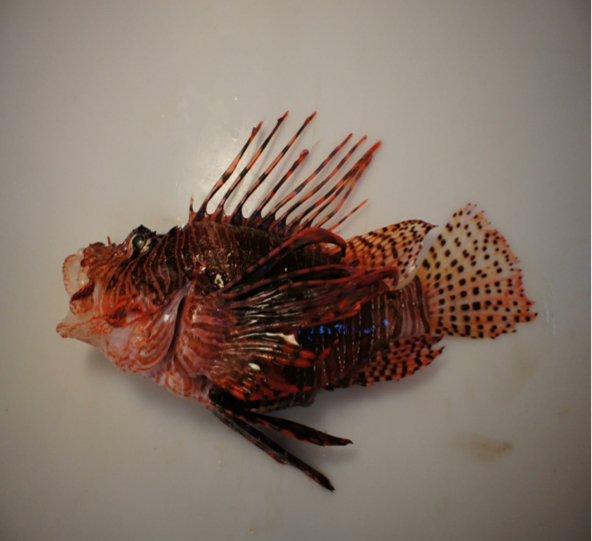
In April 2014, CEI introduced a Lionfish Slayer campaign, encouraging members of the public to spear lionfish in return for payment; a venture which was met with success. This summer Myca has advertised this campaign and worked to inform Eleutheran’s about lionfish’s nature as a “venomous” and not a “poisonous” species. Through interviews he has documented the views of the public on safely consuming this invader given their deleterious effects on the reefs. Myca has been in the field interviewing fishermen, restauranteurs and other members of the public as part of his dissertation research. His data collection is also coupled with educational outreach, as each interviewee is left with a flyer, detailing the history of the invasion, why it is safe to consume (despite its venomous spines), how to handle and prepare it and what to do if stuck by a spine.
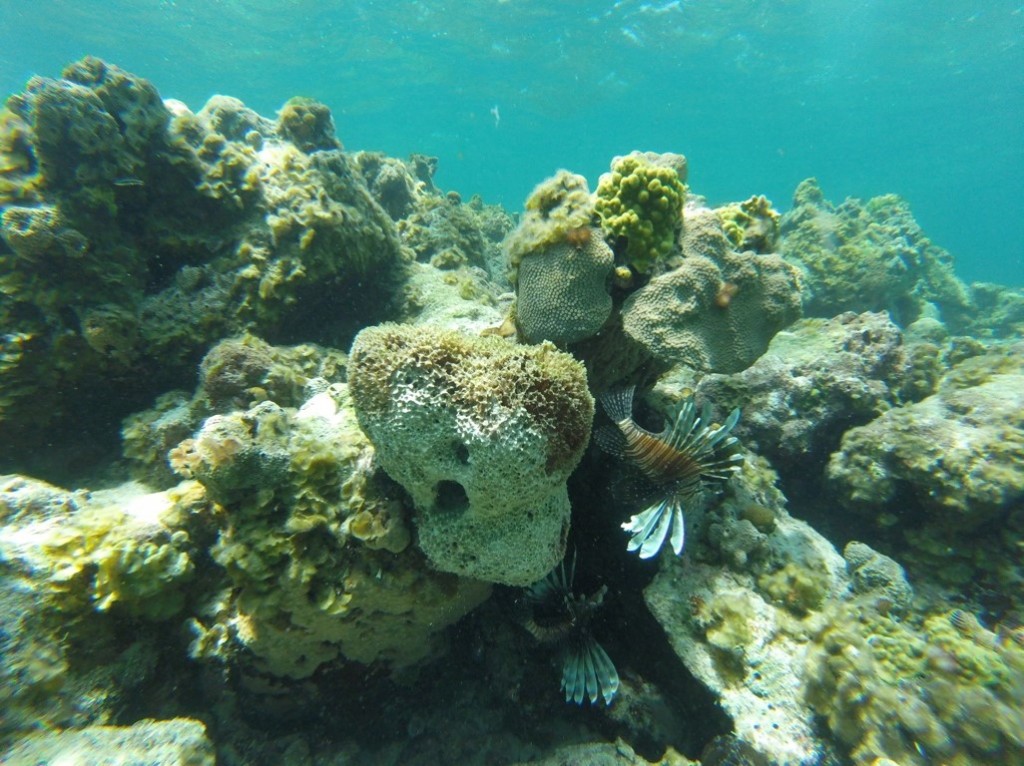
So far, it’s nature as a venomous species has been a major deterrent to consumption for consumers and catch by fishermen. Restauranteurs have highlighted a lack of availability of the lionfish, potentially linked with the apprehension of fishermen to catch them. It is the hope that this research and outreach effort will help further educate the public as to the value of eating red lionfish and will provide insight as to how best to further promote this venture.
Over the course of six weeks, Natasha Webbe of the University of Leeds, a student representing Operation Wallacea, has been working with the Cape Eleuthera Institute to study the success of the coral nursery set up in Cape Eleuthera. This will be determined by studying staghorn (Acropora cervicornis) and fused staghorn coral (Acropora prolifera) growth rates in relation to the environmental conditions surrounding the coral restoration nursery installed near CEI in March 2014 in collaboration with the University of Miami.

Coral reefs are extremely important worldwide as the most biologically diverse ecosystem, providing essential goods and services. The Bahamas, in particular, are dependant upon coral reefs to support their fishing industry through the habitats they provide. Acropora cervicornis is a major coral reef building species however have been classified as critically endangered by IUCN’s red list, therefore, conservation efforts are crucial to re-establishing healthy coral reefs around Eleuthera, The Bahamas, and the Wider Caribbean.
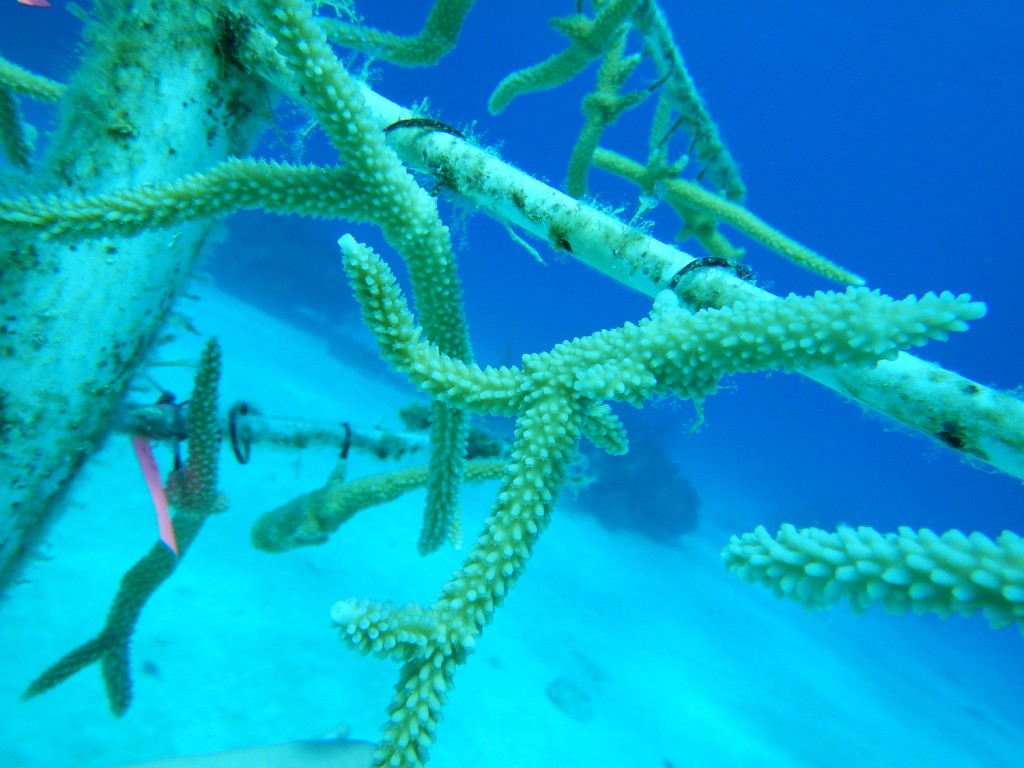
This project consists of measuring each coral fragment growing in the nursery and conducting data analysis on three years’ worth of data to assess growth rates at different depths of the tree and during different seasons of the year. Complexity will also be studied as fragments with higher complexity may be more beneficial for transplantation, aiding the outplanting success in the long term. Fragments are vulnerable to thermal stress due to climate change causing bleaching and the overgrowth of algae. Therefore, using an index, bleaching and algae have been recorded and can be compared with previous data to establish any significant correlations with the time of year or environmental conditions. Additional observations are recorded, such as, Domecia acanthophora crabs which are known as the ‘Elkhorn crab’ and are good for coral nurseries. Water samples have also been taken to analyse pH and salinity as well as having recorded temperature on site to see whether any of these variables are affecting growth rates.

This research will form the basis of Natasha’s undergraduate dissertation aiming to determine any relationships between A. cervicornis and A. prolifera growth rates and their environment in the nursery. This can establish their optimum growth conditions to further improve the coral nursery as a restoration method.
Green sea turtles (Chelonia mydas) are one of only seven remaining sea turtle species. These reptiles were classified as an endangered species on the IUCN Red list, following the abrupt decline of populations due to overexploitation and habitat loss. Although the green sea turtle is protected in Bahamian waters, it is still of great importance to investigate the factors that influence where juveniles choose to forage, as this life cycle stage is crucial to the species’ ability to grow and thrive. Seagrass beds play a critical role within this life cycle stage acting as a key food source for the green sea turtle, and therefore vital for development. This summer, at the Cape Eleuthera Institute, Trinity College Dublin student Anna Whitaker, Oxford University student Alison Maughan and Royal Holloway University of London student Kate Rowley, aim to carry out research which could contribute to the improvement of future conservation efforts of the green sea turtle.
A total number of 9 mangrove creeks were studied in this experiment. At each creek they visited, quadrats were placed and used for the investigation of seagrass structure, where percentage cover, species richness, and leaf canopy height data were collected. As well as this, environmental factors of the area, such as water depth, were studied. Samples of seagrass were also taken using a core.
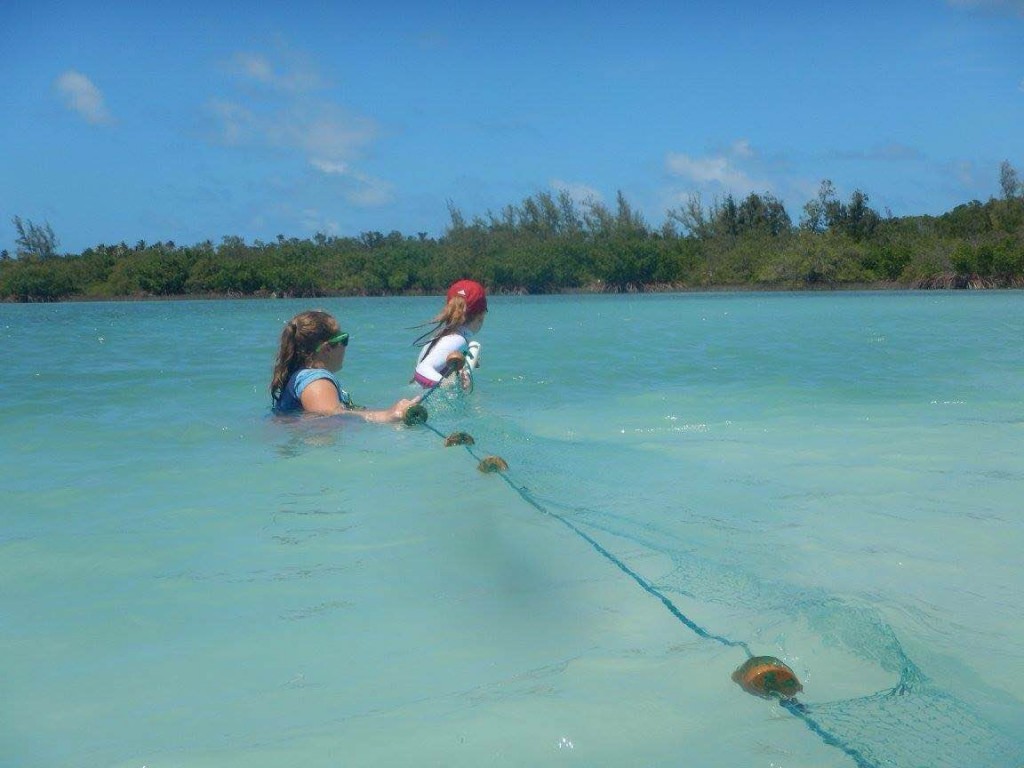
Laboratory analysis of the seagrass samples was used to identify the determinants of sea grass density. This analysis included calculating the number of leaves and shoots in each core taken. After which, the biomass of the samples were calculated by dividing out the core samples into above and below-ground matter. These seagrass samples were heated, and therefore dry weights of above and below ground seagrass matter could be taken.
In order to collect data regarding the abundance of turtles, methods including turtle seining, chasing and abundance surveys were carried out within the creeks where seagrass data had previously been collected. These methods sought to demonstrate correlations between characteristics of the seagrass and the abundance of turtles.

Within each creek, a number of different habitat types were studied, including the mouth, silty mangroves, warm shallow waters, and seagrass meadows.
In addition, this project has collaborated with numerous programs, such as Earthwatch, allowing this research to connect with educational outreach and inspire young marine biology enthusiasts.

The data collected will identify the fine-scale patterns of site selection and resource use of foraging grounds. This will contribute to a better and more in depth understanding of green sea turtle habitat usage. The research objectives of this study will form the basis for Alison, Kate and Anna’s undergraduate dissertation projects. We thank them for their help and wish them all the best with their studies!
Elkhorn (Acropora palmata) and staghorn (Acropora cervicornis) corals are major reef-building corals found off the shores of Florida and throughout the Caribbean. In recent decades there has been a widespread decline in distribution and abundance of elkhorn and staghorn corals. Their decline is the product of compounding effects from local stressors and global factors linked to climate change including ocean acidification, sea level rise, coral bleaching, disease, and the increased severity of hurricanes. The loss of the Acropora species negatively affects the reef function and structure. This summer, McMaster University student, Heather Summers, in collaboration with Operation Wallacea and the Cape Eleuthera Institute, has been investigating the abundance and distribution of the Acroporid coral populations in South Eleuthera, Bahamas.
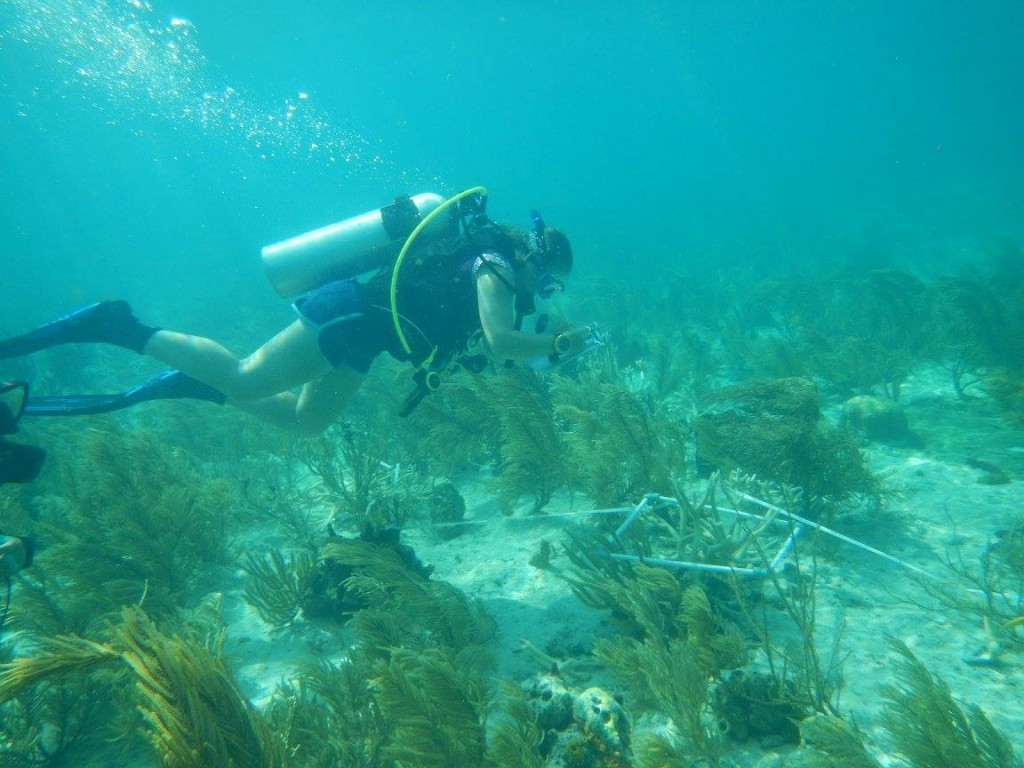
The purpose of this study is to collect qualitative and quantitative observations of coral reefs for use in the development of a mathematical model that will help describe these complex marine ecosystems. The data collected includes benthic assessment, species abundance, bleaching status, and environmental conditions of temperature, pH, and salinity. At each site transects are laid out and benthic communities are assessed using habitat assessment scores (HAS) and the line-point-intercept method in order to quantify the coverage of live scleractinian coral and macroalgae. This research project also investigates the impact of predation and herbivory on coral health by recording the abundance of key fish families and invertebrates including Diadema antillarum, Scaridae, Acanthuridae, Pomacentridae, and Pterois. The information amassed by this research project can help inform decisions on coral nursery site selection and identify potential donor colonies for regeneration in the nursery.
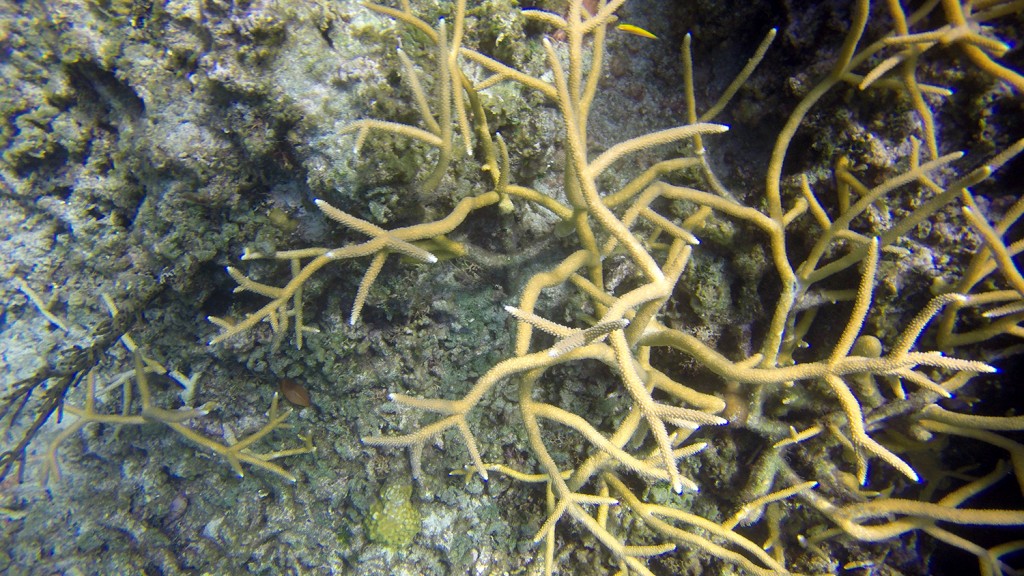
Coral reefs are complex, dynamic marine biomes and their health is reliant upon many factors. This complexity makes coral reefs ideal platforms for the development, testing, and validation of mathematical models that can be used to help explain and predict the impacts of adverse conditions on Acropora health.
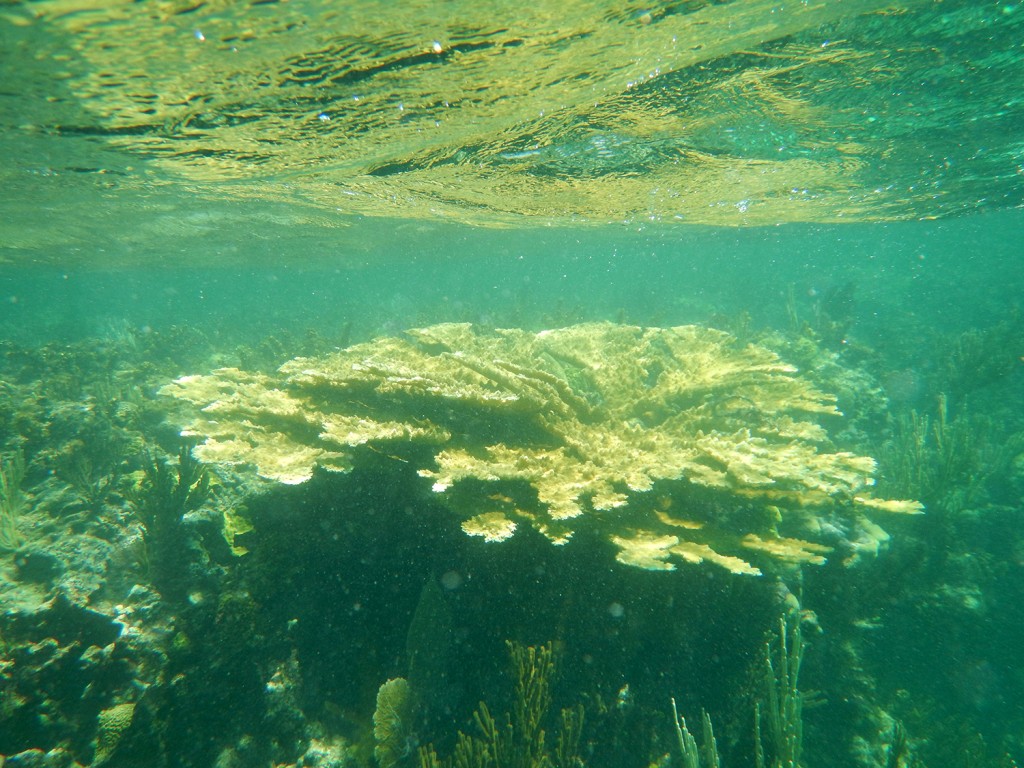
If you spot any elkhorn or staghorn on Eleuthera or elsewhere throughout the Bahamas please report it to us! info@ceibahamas.org